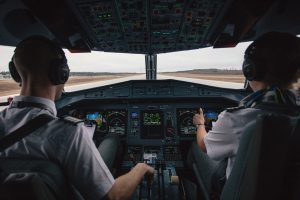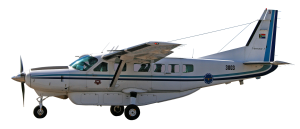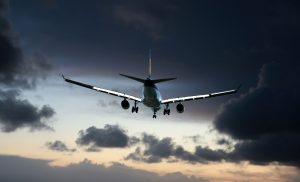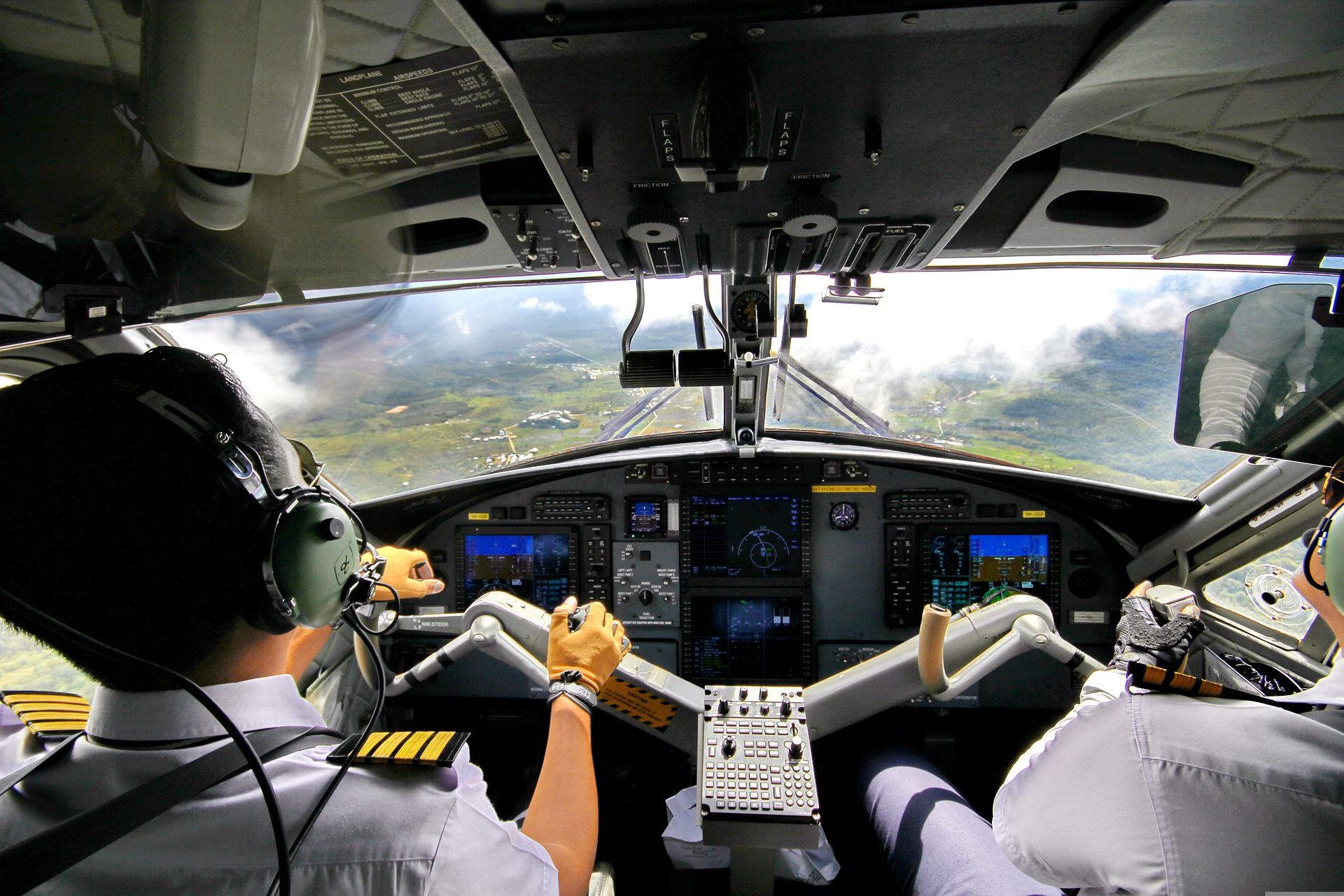How To Become A Pilot – Steps, Eligibility & Complete Guide
It is ideal for all aspiring pilots to be on this page. Here we talk about how to become a pilot extensively, this article aims to ensure that those who dream of flying aircraft in the near future will have detailed information on the aviation industry here without having to go on to other sources.
Thus you can sit back assured you will get to read about every topic in your mind as regards becoming a pilot. You may need a pen and a book to put down the vital information herein.
Regardless of where you reside, this piece will be helpful to you. Let us head right into the topic of discussion.
Who is a Pilot?
A pilot is anyone trained to control an aircraft’s flight by maneuvering the available flight controls. A pilot is a word with more than one meaning; thus, it is ideal to refer to the flyers of planes as aircraft pilots.

Given this definition, one can say that pilots are to aircraft as drivers are to cars. Meanwhile, we say the drivers’ job is to drive, and aircraft pilots are to fly or pilot.
Eligibity & Requirements for Becoming A Pilot
- The applicant must have a minimum of a high (secondary) school certificate. Your grades in English, Maths, and four other sciences courses must be good.
- Most employers require you to be at least 18 years old. Sometimes the needed minimum age maybe 21 years old.
- Often there is a height requirement between 5ft 2in and 6ft 3in. Anyone whose height is above 191cm or not up to 157cm may not be allowed.
- Applicants must be fluent in English since this is the language of the majority and air traffic controllers. Thus, non-native speakers of the language must at least attain level 5.5 in IELTS or ICAO before starting their pilot training.
Pilot course qualifications
In addition to the points above, a person must be at least 16 years of age to obtain a student pilot license.
More so, students in pilot training need to understand, read, speak, and write fluently in English.
Steps on how to Become a Pilot
Becoming a pilot comes with rigorous certification and criteria, below are six (6) accurate and measurable steps to become a pilot anywhere in the world. This will, though, be based on becoming a private pilot; other aviation categories require similar procedures.

1. Find a pilot training school
You have been provided with this information on this page already. Keep reading, and you will get there.
The case here is the same with what you do when you want to take any course outside aviation—knowing which school you wish to attend and perhaps why the school is the first thing to do.
2. Medical tests for pilots
Ensure you have your certificates for the required medical tests ready on time. It usually takes some hours to put this in place. Several things in aspirants, including eyesight, hearing, heart rhythm, general physical check, lung function, urine tests, etc., will be conducted.
If, after meeting the requirements above, your health can meet up with these tests too, your chances of becoming a pilot will already be high. Your certificate will be given to you on the same day if you meet the required standards.
This will be more of a check-up on your general health status.
3. Apply for a student pilot license
You are not learning how to become a pilot in your bed, so you should apply to any institution of your choice for a pilot license.
4. Start flight training lessons
This is the central part of becoming a pilot. Pay attention to everything you are taught in the school once you are admitted.
The training is usually for a short period, so prepare your mind and get over what seems like a big deal.
5. Take Private Pilot Knowledge Test
After being taught all that you are supposed to know about flying as a private pilot, a knowledge test will test your knowledge of the lessons taught. You will move on to the final stage if you pass the test.
6. Take Private Pilot Practical Exam
Finally, you would be faced with the last stage of the whole process, which will test your ability to fly an aircraft. Remember you have not done practicals before.
When you come out well in this step, you will be presented with the private pilot license, and the improvement part is left to you. Practice makes perfect, and remember, you should learn more, especially if you wish to get another pilot certificate.
Top Pilot/Aviation Schools Around You
You must know about the aviation schools around you as an aspiring pilot. This article section will examine top aviation schools in some countries.
We will not be able to cover the aviation schools in all the nations by you are most likely a citizen of these countries or at least have them close around your country of residence.
Top Aviation Schools in the United States of America
One country holding the award for the best airmen in history for so long is the United States of America. If you are privileged to get to this country, ensure you do not leave without running your aviation course there.
America has all it takes to build your career as a pilot.
- Arizona State University Global Launch
- Bridgewater State University
- Florida State College at Jacksonville
- San Jose State University
- Delaware State University
Top Aviation Schools in Nigeria
Nigeria is the home of more than twenty well-equipped aviation schools. The good thing about these schools is that they are not as expensive as most people think. This country, the giant of Africa, can also be magnificent in training for your dream to become a pilot.
- International Aviation College
- Nigerian College of Aviation Technology
- Universal School of Aviation
- Sky Aviation Training Center
- Landover Aviation Business School
Top Aviation Schools in Japan
- Japan Aviation High School, Yamanashi Campus
- Panda Flight Academy
- Fox Sky Japan
- Civil Aviation College
- Tokyo Institute of Technology
Top Aviation Schools in China
China is always one of the top 10 countries when we talk about technology in the world. In case you have not thought of that, it is enough reason for you to choose your pilot training course in China over a few other countries.
Below are some of the recognized pilot training schools in China.
- Civil Aviation Flight University of China
- Harbin Engineering University
- Beth and University
- Harbin Institute of Technology
- Shenyang Aerospace University
Top Aviation Schools in South Africa
- Johannesburg School of Flying
- Aeron Academy
- Eagle Flight Academy South Africa
- Heidelberg Flight School
- Cape Town Flight Center
Top Aviation Schools in Canada
Canada is known for several other amazing things like entertainment. It is also one very peaceful country in the world, and you might want to attend a pilot training school in Canada for that purpose.
Learn to become a pilot, have fun, and live in peace when you visit Canada! Some of the country’s top aviation schools are listed below:
- Canadian Aviation College
- Collège D’Aéronautique
- Mount Royal University
- Chinook Helicopters Flight Training
- University of Waterloo
Top Aviation Schools in Brazil
This also has to come on our list. You will find some of the best airports in the world in this Brazil. The Southern American country is known for its fully facilitated pilot training programs.
- EWM Aviation Ground School
- University of Sao Paulo
- University of Brasilia
- Federal University of Rio de Janeiro
- Federal University of Santa Catarina
Top Aviation Schools in Argentina
- Aeroclun Chacabuco, Argentina
- Aeroclub Dolores, Argentina
- ASG Training Center
- Vuelo Flight School
- Aviacion Tejedor
Top Aviation Schools in Australia
- Australian Wings Academy
- Flight Academy Australia
- Australian National Airline College
- Air Gold Coast
Top Aviation Schools in New Zealand
- New Zealand Airline Academy Limited
- Ardmore Flying School
- International Aviation Academy of New Zealand
- International Travel College of New Zealand
- New Zealand School of Tourism
Top Aviation Schools in the United Kingdom
We have noted that the United States of America is the best place to become a pilot due to the record the country has held for years. However, here comes another incredible country known for its great aviation schools and pilot training courses.
If you are a native of the country, do not think of going outside the country for your license, the UK is also very good at flying.
- University of Leeds
- Kingston University London
- CAE Oxford
- Brunel University London
- EFG Flying School
Top Aviation Schools in Fiji
- South Pacific Aviation Training Institute
- Advance Aviation Training
- Pacific Flying School
- Nadi Airport School
- Fiji Airways Aviation Academy
Top Aviation Schools in France
If you want to become a renowned pilot, you can consider starting your career in France. The country is the home of some of the best airports in the world. Several higher institutions in the country offer good quality education to students who dream of becoming pilots.
Below are some of the well-known aviation schools in France.
- Paris Flight Academy
- Esma Aviation Academy
- School Supérieure D’aviation
- EPAG NG
- Air Occitanie
Top Aviation Schools in Papua New Guinea
If you stay in Australia (as a continent), consider the pilot training schools on this list. They are good at training pilots and also not very expensive to attend.
- Air Niugini Cadet Program
- MAF Aviation Training Center
- Acetech Aviation College
- Aiyura Aircraft Maintenance Engineering School
Chances of Going to These Aviation Schools
You can rest assured you are staying in or relatively close to some of the aviation schools because they are the top aviation schools gathered from top countries in the seven continents of the world.

Recognized schools to become a pilot in the following places: Asia (Japan & China), Africa (South Africa & Nigeria), North America (Canada & United States), South America (Argentina & Brazil), Antarctica (New Zealand & Australia), European (France & United Kingdom), and Australia (Fiji & Papua New Guinea) have been listed above for you.
Best Country for Pilot Training
The United States of America has long held titles like this alongside ‘the world power,’ and it is the best in training pilots, with the top airmen in the world and some of the world’s oldest aviation schools.
This is not to dispute the fact that no other countries are highly respected and recognized for their pilot training programs.
How much do Pilots earn?
Without allowance, pilots that are just starting their careers could earn based on the payment structure below:
As a flying instructor – £1,100 monthly and often about £20 per flying hour
Turboprop Pilot – £16,000-£35,000 per year
Small Business Jet – £17,000-£35,000 year
Short-haul (Cadet First Officer) – £16,000-£30,000 per year
Long-haul (First Officer) – around £60,000 every year
Long-haul (Captain) – about £120,000 per year
Short-haul (First Officer) – £30,000-£60,000 annually
Short-haul (Captain) – £60,000+ per year
Like other aspects of this piece, remember that your job and place of work can significantly affect your earnings.
Importance of Pilot Schools
We have said enough about how to become a pilot. Why not examine the top few reasons becoming a pilot is a good choice for you? Well, you’ve got to consider the following reasons for the importance of attending a pilot school.
1. Circle Expansion
Do you like to make good friends? Yes, not just friends but good ones at that! You start making friends right from the time you withdraw your registration for any aviation school of your choice.
People with common interests will be at the school, and you will have the option to choose from the number of the population available around you.
2. For Exposure
Remember that as a pilot, especially a commercial pilot, you will be moving out of your state or country of residence. This could be one great way to inform you about several other ethnic groups, people, things, and places.
3. Money
Money is one of the most significant reasons most people become pilots. You will earn massively as a pilot when your program has been completed.
There are several other reasons, but let’s maintain these three. Whatever must have made you think of reading this piece can be another important reason.
Pilot Training Preparation Tips
It’s time to prepare you ahead for whichever pilot training course you have in mind to take up at your desired aviation institution.
As you get yourself prepared for the pilot training, we would advise you on a few things to put in check. They are:
1. Taking flight lessons online
If you have identified the aviation school you would like to attend, then the next thing you can do right away to help yourself is to get a way to follow the school up and start shadowing flight lessons – noticing how the flights are done from the beginning to the end.
2. Connect with pilots you know
If you have links with some pilots, it is now, not later, when you have to connect with them.
Your aim in combining is to learn about the things you may not be able to understand on your own.
3. Get used to aviation terms
Most students find it challenging to learn the language used in communicating between air traffic controllers and pilots. One good way to prepare for pilot training is to understand aviation terms.
This can be easily achieved by listening to live ATC. Listen to general airports’ radio frequencies like Denver’s Centennial (KAPA).
4. Read Articles on Aviation
Get yourself some pieces of articles written on pilot or aviation topics anywhere and feed your brain with the information provided there regardless of the subject.
5. Get your medical certificate out of the way
Since you have learned about it now, you should not have to do the necessary aviation medical tests when it’s time for you to go to school. Get the tests done now.
6. Make good use of the media
All that you have access to, primarily your mobile device, should be used in learning about aviation by this time.
This is because most school students appear to have been caught unaware, which is not good enough—considering the broadness of the field, the earlier, the better.
Subjects Offered in Aviation Schools
Do you ever wonder why people tell you aviation school is not for you? If you have been told before, then it is most likely that you are not a bookworm. A wide variety of subjects is covered in aviation schools, making it strenuous for students that do not like to read.
And as a matter of fact, most subjects are things that would be entirely new for your hearing, which is not the case when students apply to run other programs at the University.
- A warm front, associated clouds, and weather
- Aerodynamics
- Air Navigation
- Air regulation
- Air Speed Indicator
- Air temperature measurement in flight
- Air traffic services
- Aircraft accident and incident investigation
- Aircraft and engines
- Aircraft environment control system
- Aircraft magnetism
- Altimeters
- Approach control service
- Artificial horizon
- Atmospheric pressure
- Aviation and medicine
- Comparison of a jet engine and piston engine performance
- Earth Magnetism
- Electronic flight information system
- Flight management system
- Flight through severe weather and turbulence
- Fuel planning
- Ground Proximity Warning System
- ILS (Instrument Landing System) and MLS (Microwave Landing System)
- Inertial navigation and inertial reference system
- Meteorology
- Navigation computer
- Piston Engine Cylinder
- Principles of operation and construction of a turbine engine
- Priority landing
- Radio telegraphic apparatus
- Radio wave propagation
- Reduced vertical separation minimum search and rescue
- Registration and marking of aircraft change in ownership
- Satellite navigation system
- Search and rescue organization and procedures in (your country)
- Secondary surveillance radar
- Visibility reducing phenomena
You are not offering all these courses! The course you intend to take will determine how many of them you will take. But you might not be studying all of these courses at a time. You may find the part untouched when you undergo programs for your type ratings.
More so, the country you are studying in can determine the courses you will offer.
Available Courses in Aviation Schools
Below are some of the most common courses you are likely to choose from in every aviation school.
[wpdatatable id=163 table_view=regular]
If you have not yet figured out which of these courses will be the best for you, then you should think of your age and whether you would like to earn as a pilot or not.
Dreaming of earning as a pilot, for instance, means you do not want to become a private pilot.
For instance, when you are already above 45 years, you may not want to bother your memory with courses offering commercial pilot certificates since you are at the stage of your life where you need more rest.
Types of Pilot to become
The category of types (as many will put it) of pilots is one of the most confusing aspects of aviation for aspiring pilots and others who haven’t been to the school or read about it before.
Many think all pilots can fly all aircraft, but that is not true. So how is it done? In the United States (as in many other countries), licenses or certificates are issued to student pilots based on the course undergone and level of qualifications to determine the purposes they can fly for.
Note That: ‘Ratings’ is not equal to ‘license’ if you have heard people talk about these two aviation terminologies. We are right on the licensing aspect.
The following are the six major types of pilots:
1. Sport Pilot
The sport pilot certificate is the easiest and least restrictive among other categories.
As an aspiring sport pilot, you must have only 20 hours of logged training time. Moreso, applicants don’t need to have an FAA medical certificate.
Sports pilots are restricted to flying above 10,000 feet at night or in Class D, C, or B airspace. Similarly, sports pilots are limited to just a single passenger.
If you wish to become a pilot on time, then you can go for this.
2. Recreational Pilot
This is a little closer to the Private and Sport Pilot License. However, attaining this level means a pilot will be open to flying heavier aircraft.
Recreational pilots keep out of controlled airports.
Those who aspire to obtain this certificate must have a minimum of 30 hours of flight time.
3. Private Pilot
This is the most common pilot certificate you will find across the globe. The number of people possessing this is more than the number of other categories of pilots in any aviation school.
After meeting the generally expected criteria, the requirement to become a private pilot is to have a minimum of 40 hours of flight time. Of the 40 required hours, the individual must have flown with an instructor for 20 hours.
There are limitations to this certificate, which include the fact that private pilots can not be entitled to compensation for pilot services. The license holders are not allowed to fly for commercial purposes, but they can fly at night.
You do not get paid for this flying since you only fly aircraft for personal purposes. What is good about this course is that applicants can complete it within six months.
4. Commercial Pilot
Do you know you get paid for your flying services as a commercial pilot? Yes. This remains the top reason why most aspirants run to seek commercial pilot certificates.
Nonetheless, commercial pilots must be regulations abiding because they will have to work more with different policies about flying operations laid down by federal aviation for scheduled flights.
More than other categories of pilots, commercial pilots need to widen their knowledge of professional flight operations because the job is more demanding.
5. Flight Instructor
You can achieve a flight instructor’s license when you have a more in-depth knowledge of other aviation categories, including the mastery of theories and instructional design.
As a flight instructor, you get paid for sharing your knowledge of the career with other aspiring pilots, flying, and building your personal experience to move on to an airline.
Consider going for this if you love to guide other people.
6. Airline Transport Pilot
The ATP (Airline Transport Pilot) is the highest pilot certificate you can achieve.
Aspirants must have had a minimum of 1,500 hours of flight before the certificate can be awarded to them. It is also essential that dream holders of the license are above 23 years of age.
Who needs an ATP?
The Airline Transport Pilot License is what most commercial airlines require pilots to have before they are qualified to be full-time commercial pilots.
What is Pilot Type Rating?
Type rating in aviation is an authorization entered with a pilot license giving additional privileges to the pilot alongside restrictions about specific aircraft types.
Difference between ratings and certificate/license
Those who are close to aviation school students may have trouble figuring out the differences between ratings, license, endorsement, and certificate.
Two of the words above mean the same thing, and the other two also refer to the same thing, so your trouble is half shot.
Both license and certificate refer to what a student who wants to become a pilot can do after his course. The types of pilots on the list above are based on the certificates pilots obtained in school.
On the other hand, endorsement and ratings are like courses or operations a specific pilot took for additional qualifications. So that they can be able to go on unique flights; for instance, pilots with ratings can go on instrument flights.
How many type ratings can a pilot have? As it stands, there are no limitations to the number of type ratings a pilot can earn. It was recorded in 2014 that an individual pilot holds 105 type ratings, and that was the highest in history because no other better case has been registered.
Another thing you should know is that pilots pay for their type ratings, perhaps because the training involves a considerable sum of money. Ideally, this shouldn’t be so; thus, it is not the case everywhere.
Age Restriction To Becoming A Pilot
I have noticed some people asking if they can still enroll in any pilot course at 40+ years of age. To be direct to the point, yes.
You can become a pilot even when you seem to have crossed the youthful days. Considering your age, what matters is the course you will be going for, and at this point, you might need to scroll back to the standard aviation courses and their durations above to know which will be good for you.
When you are around 22 – 30, the best program for you is the commercial or airline transport pilot course.
Basic Aviation Theories
It is a nice thought if you start learning some of the rudiments of flying aircraft right here. Let us examine some of the basic principles and theories of aviation.
Lift, thrust, weight (gravity force), and drag are the four forces that help an airplane fly. It is okay if you don’t understand what these terms mean before.
Life is determined by the angle of attack, the airfoil’s shape, air density, and the area of the surface exposed to the airstream.
The five (5) Aviation Ps
The 5 Ps in aviation is Plan, Plane, Pilot, Passenger, and Programming.
You must understand the four fundamentals to control your aircraft through the six (6) flight motions. They are:
- Straight-and-level flight
- Turns
- Climbs
- Descents
The three primary control systems responsible for flight safety are the stabilator (elevator), ailerons, and rudder.
There are two fly rules, the Instrumental Fly Rules (IFR) and Visual Flight Rules (VFR).
The IF Rules control instruments while the pilot controls the VF Rules.
Types of movements of an aircraft
There are three types of aircraft movements you have to master now:
- Roll (nose up or down)
- Pitch
- Yaw (side-to-side motion)
The pitch movement is controlled by the elevator or stabilator.
There are three axes upon which any aircraft can move: “up and down, left and right, forwards and backward.” No type of functioning aircraft is an exception to this principle.
The major theories and principles in aviation school are based on how aircraft fly and the consequences of every flight. This explanation can be compared to the primary ways you can choose to ride your bicycle and the results that will follow each riding pattern.
You are already eager to know more about these theories and principles. Do not hesitate to take up some aviation magazines or articles when you are done on this page.
Those articles have a way of preparing you for your first days at the pilot training institutions, so maximize the opportunity you have now.
For instance, the origin of words like yaw is unknown to many pilots because they are nobody’s native language – bend your head to start learning them.
Qualities of a Good Pilot
The following are some notable qualities common among good pilots across the globe:
1. Self-confidence
Trusting one’s decisions as a pilot, especially during flight emergencies, can be the last thing on your mind if you are not confident enough.
This must also be to some extent, as too much confidence may result in arrogance.
2. Situational Awareness
A pilot must have situational awareness to the full. The reason some flight accidents could occur might be a result of inadequate situational awareness.
Situational awareness means being mentally aware of unforeseen circumstances and predicting their effects.
3. Good Communication Skills
All great pilots are known for their incredible verbal communication skills, which are used to communicate effectively with air traffic controllers.
4. The Desire to Learn
As they say, becoming a pilot is not a joke. Learning wide is one thing pilots are known for, but not all of them genuinely desire to do so.
This desire is one good quality of successful pilots. When such pilots are not flying, they are learning more about the field, and they attend courses for type ratings, etc.
5. Attention to detail
For better flight safety, it is essential to pay attention to details and work with them properly. Great pilots are always known to pay much attention to every bit of information, and not having this means a pilot has only a slim chance of success.
There is no room for mistakes in the skies, making this essential.
6. Humility
The belief that there is always room for improvement in a pilot will make them prioritize visitation to more experienced pilots for advice.
Improving flying skills becomes very easy when a pilot is humble.
7. Staying calm under pressure
Good pilots are always focused on the journey and are never physically bothered by unexpected circumstances while flying.
The time of staying calm is what they use in figuring out ways to come out of difficult situations.
8. Teamwork and leadership skills
It is also essential for pilots to have the spirit of working in a team and leadership. They must also be able to make decisions and manage stress.
Moreso you should help yourself by learning physics and maths before going to school as these are some of the significant subjects every student training to become a pilot must take.
Is Pilot A Good Career Path?
Yes,
We are talking about this after we have examined the qualities of a good pilot on purpose. This arrangement will help us get a clear answer to this question real quick.
Once you have the qualities above, strength, and the money to spend on the costly aviation courses, you are almost there, and your determination is the remaining thing to build towards the journey. Remember, you can do it if you dream it.
Nonetheless, because there are merits and demerits to becoming a pilot, you might need the words of an expert in the field.
At the beginning of your career or after gaining the commercial pilot certificate, you may have to manage any job you get for experience’s sake because most airlines will not employ you since you have 1500 hours of flight experience.
Conclusion
You should have learned much about becoming a pilot by now! Aviation is a broad career to begin as a teenager; therefore, you should know about all it takes.
Your life and the lives of your passengers matter; one reason you must undergo a check-up for your eyesight, hearing ability, etc. Understand and familiarize yourself with some of these little tricks to make the journey simple for you.
We hope that this article is helpful from the beginning to this point. We would be glad to know if you have any questions to ask on the given topic in the comment below.






